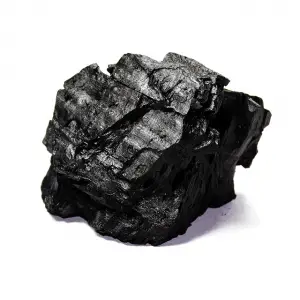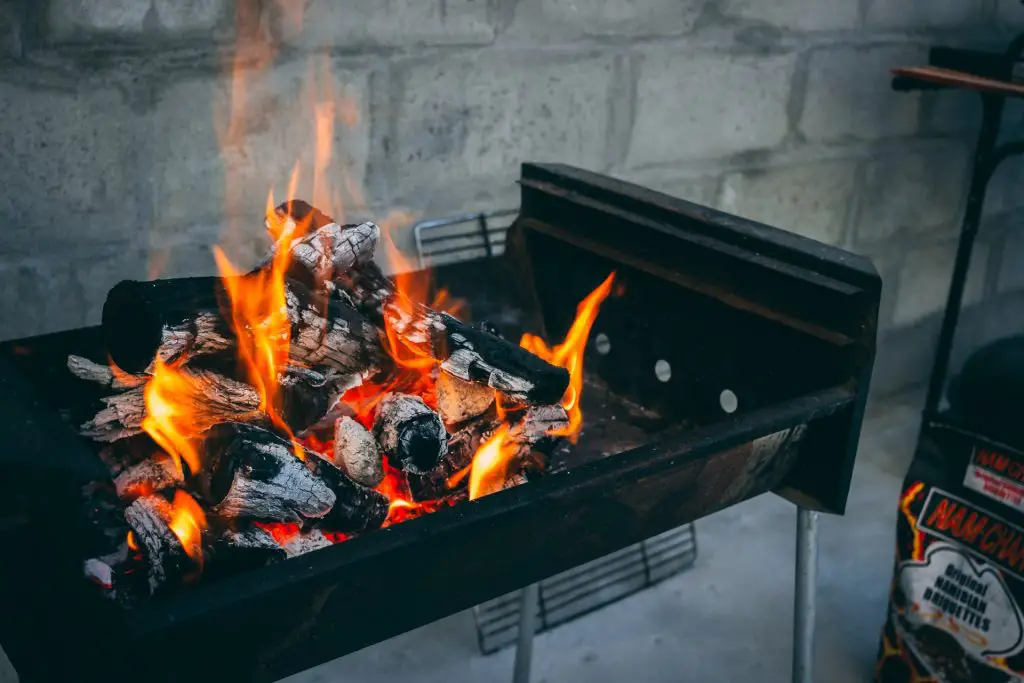Survivalism sometimes requires doing the unimaginable and going for alternatives. There are times when you have to use traditional methods to get a couple of things done. A good example is using activated charcoal to filter water, make gas masks, and even treat poison.
It is possible to make activated charcoal (also called activated Carbon) at home, as long as you have the necessary ingredients and tools needed. The process is an intensive one, but the ultimate use makes it look easy. Follow the steps on how to make activated charcoal below; also, find out how to use them in different scenarios.
How to Make Activated Charcoal
Ingredients
As you set out to make activated Carbon for different uses, below is a list of ingredients you will need:
- Charcoal or Hardwood
- Calcium Chloride Lemon Juice or Zinc Chloride
- Water
Tools
Regarding the tools you need, the following should help:
- Pot
- Sledge Hammer
- Fire Source
- Mortar and Pestle
- Fine Mesh Screen
- A Pan
- Coffee Filter
Take a look at
| How to Store Flour Long Term: 4 Common Traps and How to Avoid Them. |
| Best Martial Arts for Self-defense and Survival–Our Top Picks |
How to Make Activated Carbon?
Before you begin to make the activated charcoal with the tools and ingredients listed above, you must know that there are Steam-Activated Charcoal and Chemical-Activated Charcoal. Both produce the same result, but different processes and costs of production.
See the following steps to get started:
Step 1: Using a piece of hardwood or a dense plant fiber like coconut, ensure you keep it under a hot temperature to maintain dryness.
Step 2: With the material dry and ready, place it in a pot with perforations – ventilation holes, and set it on fire. In the process, make sure the pot is covered.
Step 3: Keep the pot as hot as possible, so its contents are completely burnt off, except for the Carbon. This part takes several hours. The presence of smoke and gas marks the completion of this burning stage.
Step 4: Finally, set the pot away from heat, leaving the charcoal to cool.
Step 5: After cooling, remove the charcoal and rinse to get rid of debris.
Step 6: The next phase involves grinding into small chunks and then into powder. Whatever you do, ensure you don’t leave any part with large chunks.
Step 7: With lemon juice or calcium chloride, bleach a large portion of the powdered charcoal.
Step 8: The bleaching of the charcoal transforms it into activated Carbon.
Step 9: Mix the other small portion of the powdered charcoal with ¾ of distilled water and leave to settle.
Step 10: Next, mix Step 9 with the activated Carbon until it is covered completely.
Step 11: For about a day, leave the charcoal mixture to settle.
Step 12: Use a coffee filter to drain liquid out of the Carbon. The process removes chemicals from the Carbon – pure carbon.
Step 13: The pure wet Carbon should then be placed back into the pot.
Step 14: Finally, cook the Carbon for up to 3 hours to have standard activated charcoal.
If you have a tight-fitting lid or a canning jar, you may want to store the activated charcoal in it. It would be best to consider these storage options to limit exposure to air or chemicals that would affect its efficacy.
Get more insights on survival on our website.
How is Activated Charcoal Used in Different Scenarios?
Now that you know how to make activated Carbon, its application in emergencies or survival scenarios should be mentioned. Check out the three critical instances it is applied due to its effectiveness.
Water Filtration
Most survivalists and preppers are more concerned about water quality than many other things in the wilderness. Surviving is quite easy if you have drinkable water around you. Unfortunately, the chances of finding perfectly pure drinking water are slim. Therefore, there is total dependence on filtration methods to make water good for use.
A good filtration method often used involves the use of Activated Charcoal. Even though it is not effective in removing heavy metals, it can eliminate chemicals and many disease-causing bacteria. All you have to do is get a clean sock, and put the activated charcoal in it; next, pass the water through the sock.
Air Filtration
Another usefulness of activated Carbon is for air filtration. There are places with bad air or bad smell, even others with smoke, which could cause mild to severe respiratory problems. Activated Carbon helps in improving air quality by acting as a detecting sensor. It also does so much in getting rid of dangerous chemicals except carbon monoxide, which is stronger.
Likewise, gas attacks and volatile organic compounds can be eliminated with activated charcoal. It shouldn’t be a surprise that most gas masks and furnace filters have been designed with them for safety. In survival situations, you will find it useful.
Treat Poisoning
[According to research, activated charcoal has been quite helpful in treating poisoning. It can trap chemicals that cause problems during ingestion. It doesn’t stop all types of poisoning; it is one of the fastest ways to get treated before medical help. Besides, some poisons take 1 hour to 3 hours before visible effect; thus, they come in handy to stop a disaster from happening.
There is currently insufficient evidence of activated charcoal treating cancer-drug diarrhea, blocked bile flow, indigestion, flatulence, hangover, and other digestive problems.
Other poisoning cases, especially in survival situations, are those caused by insects’ bites and stings. With a mixture of activated charcoal and coconut oil over an affected area, you should get better in no time. However, you need to dress the wound – use a bandage, rinse, and re-apply until you feel a lot better.
Check out more guides with tips, tricks, and more HERE
What’s New in Activated Charcoal Use?
1. Advanced DIY Techniques: Recent community experiments have unveiled more efficient, safer home-making methods for activated charcoal. These advancements not only make the process more accessible but also safer, minimizing potential risks.
2. Environmental Considerations: With environmental sustainability taking center stage, the production and disposal of activated charcoal are now more eco-conscious. Techniques that reduce environmental impact without compromising effectiveness are at the forefront.
3. Enhanced Safety Measures: Updated safety guidelines for handling and storing activated charcoal, especially for air filtration and direct skin contact, are crucial. These guidelines ensure that users can leverage its benefits without unnecessary risks.
Broader Applications in Survival Scenarios
1. Soil Improvement: Activated charcoal can significantly enhance soil quality by retaining moisture and nutrients, a boon for survival gardening.
2. Odor Elimination: Its effectiveness in neutralizing odors in confined spaces can be a game-changer in maintaining hygiene and comfort in survival situations.
3. Emergency Medical Advances: The role of activated charcoal in emergency medicine is constantly evolving. New research has shed light on its effectiveness in treating specific types of poisoning, especially in remote or rural medical scenarios.
Technological Integration
1. Smart Filtration Systems: The fusion of traditional charcoal filtration with modern technology has given rise to smart filtration systems, offering more effective ways to purify air and water.
2. Portable Water Purification: The inclusion of activated charcoal in portable water purification devices highlights its indispensability for on-the-go water treatment.
Conclusion
The moment you take your safety as a priority, everything becomes easy for you. While there are several ways you could do that, a special type of Carbon makes a huge difference. As you have learned how to make Activated Charcoal and how to use it, ensure it is one of the things you are packing with you on the next survival adventure.
Feel free to comment below if you have any questions.
Check out more content like this HERE.



